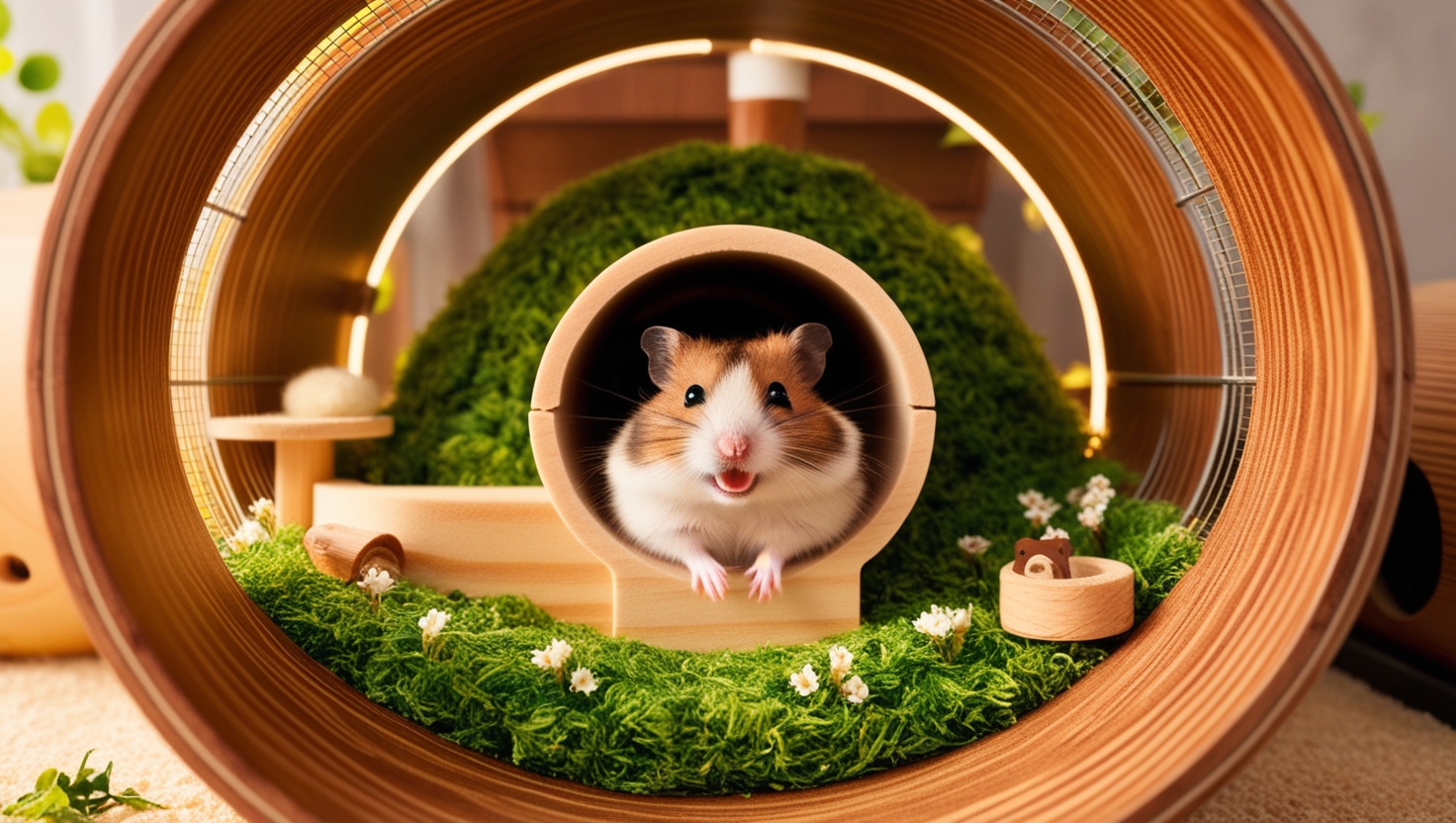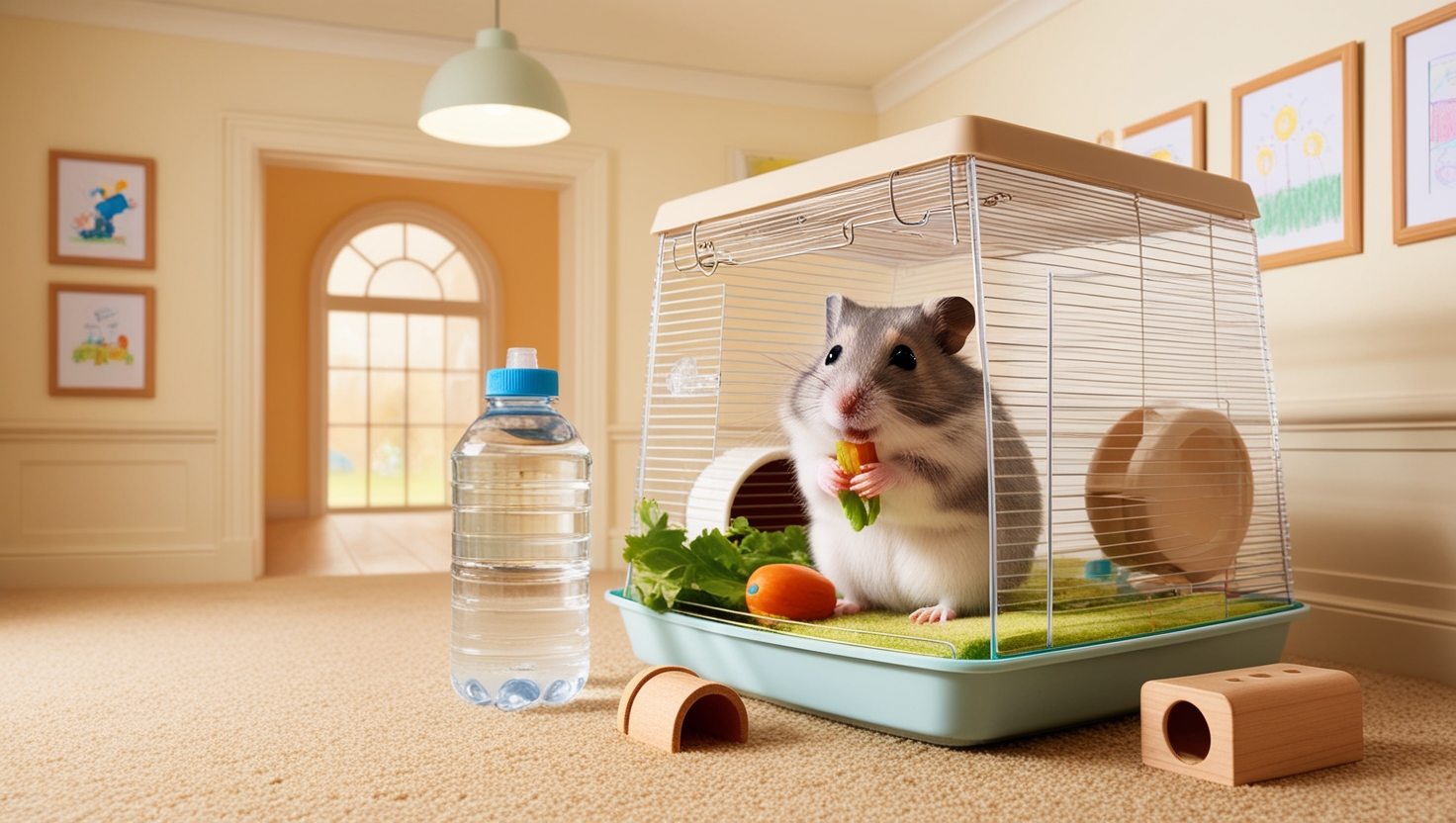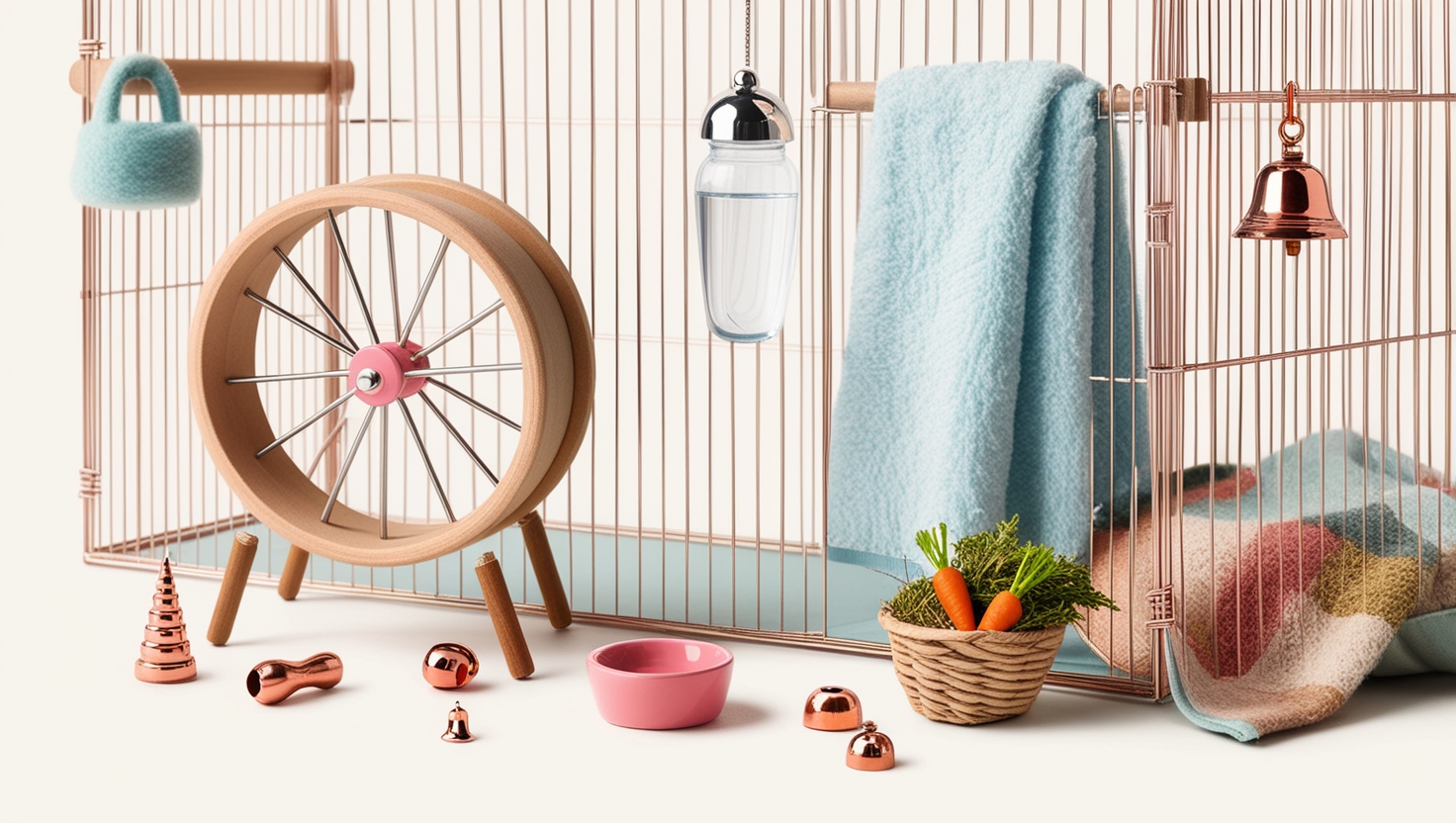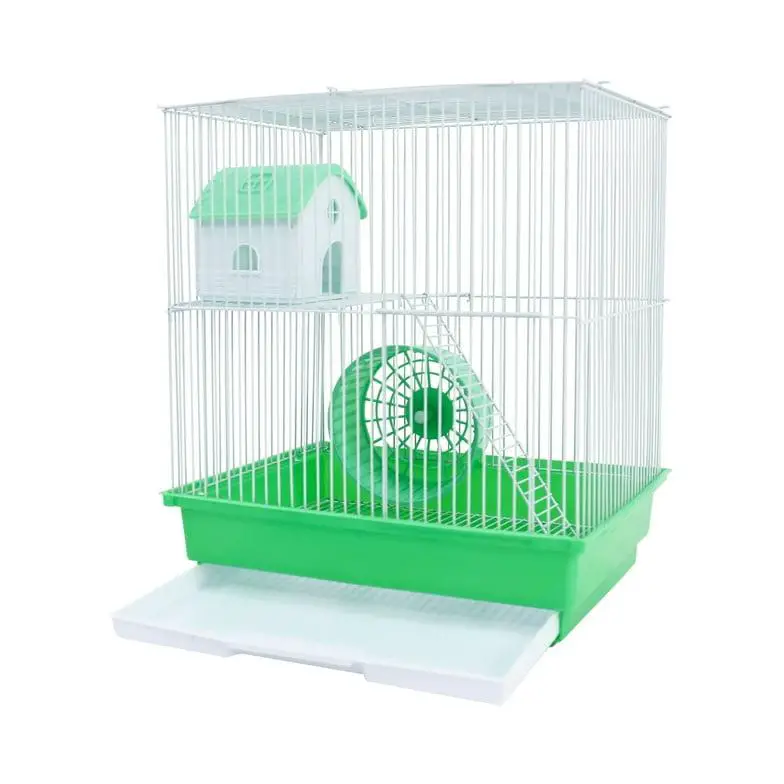Hamster cage tank – Bringing home a hamster is an exciting time, full of fluffy cuddles and adorable antics. But before you welcome your new furry friend, it’s essential to create a safe and stimulating environment for them to thrive. That’s where choosing the right hamster cage comes in!
As an experienced hamster parent and advocate for these delightful creatures, I’ve seen firsthand the difference a well-chosen cage makes in a hamster’s life. Trust me, it’s about much more than just bars and a wheel.

Hamster Cage Considerations: Beyond the Basics
You might be surprised to learn that selecting the perfect hamster cage requires a bit of planning. Here are the key factors I always consider:
1. Location, Location, Location:
Just like humans, hamsters appreciate peace and quiet. Imagine trying to sleep with a TV blaring right next to you! To ensure your hamster feels safe and secure, place their cage in a quiet area away from:
- Loud noises: Avoid spots near televisions, stereos, or bustling family rooms.
- Direct sunlight: Hamsters are sensitive to heat and can easily overheat.
- Drafts: Choose a spot away from windows or air conditioning vents.
- Other pets: Cats, dogs, and even curious children can be stressful for a hamster. Opt for a room where you can limit their exposure.
Pro Tip: Your bedroom can be an ideal hamster haven, offering a quiet and controlled environment. Just be sure to choose a silent wheel if your little buddy is nearby!

2. Space: The Bigger, the Better:
Hamsters are active little creatures who need plenty of space to roam, burrow, and explore. While the minimum cage size recommended in the US is 600 square inches of unbroken floor space, I always advise going bigger if your space allows. Remember, this measurement refers to a single, continuous space, not multiple smaller cages connected together.
Why so much space? Imagine being confined to a tiny room with little room to move around – not very fun, right? A spacious cage allows your hamster to engage in natural behaviors, reducing stress and promoting overall well-being.
Measuring Tip: Don’t rely solely on the manufacturer’s measurements, as they often refer to the exterior dimensions. To calculate the actual usable floor space, measure the interior base width and length of the cage and multiply those numbers.
Recommendation: I suggest a minimum size of a 200 qt bin cage or a 40-gallon breeder tank. For a deeper dive into optimal cage sizing, check out the California Hamster Association’s Cage Page!
3. DIY or Pre-made: Finding the Right Fit:
The next step is deciding between a DIY cage and a pre-made option. Both have their pros and cons:
DIY Cages:
- Pros: Customization, affordability, and the satisfaction of creating something yourself.
- Cons: Requires some DIY skills and tools (like a drill), time commitment, and careful planning to ensure safety and security.
Pre-made Cages:
- Pros: Convenient, readily available, and often come with basic accessories.
- Cons: Can be more expensive than DIY options and may offer less customization.
Recommendations:
- DIY enthusiasts: Plastic bins and Ikea furniture can be transformed into amazing hamster homes with a little creativity and elbow grease.
- Looking for convenience: Opt for a ready-to-assemble cage like the Prevue 528 or the Niteangel Bigger World.
- Prioritizing space and visibility: Aquariums can make excellent hamster enclosures, providing ample space and a clear view of your furry friend.
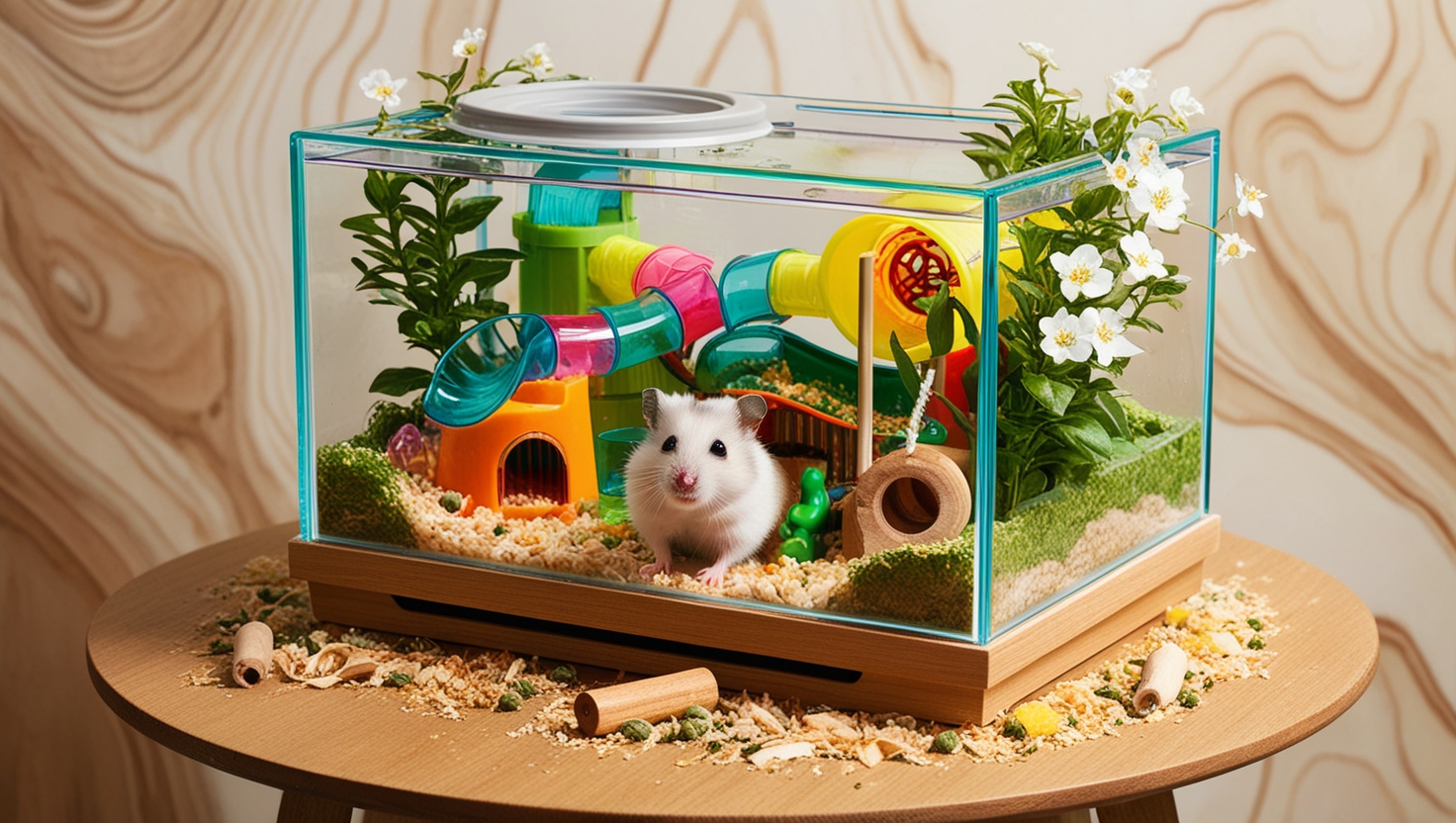
4. Security: Outsmarting Escape Artists
Hamsters, especially Syrians, are notorious escape artists! A secure cage is crucial to prevent your little adventurer from going on an unsupervised journey around your home.
Here’s what to look for:
- A secure lid: Choose a cage with a sturdy lid that latches or locks securely.
- Chew-proof materials: Avoid cages with wire or plastic components that your hamster could easily chew through.
- Strategic placement: Be mindful of placing hides or accessories too close to the top of the cage, as your hamster may use them to try and escape.
Conclusion: Creating a Hamster Paradise
Choosing the right cage is the foundation for creating a happy and healthy life for your hamster. By carefully considering the location, size, security, and your own DIY aspirations, you can design a hamster haven that’s both comfortable and enriching. Remember, a well-chosen cage is an investment in your hamster’s well-being and will provide years of joy for both of you!

Hamster Cage Tanks: Frequently Asked Questions
What are hamster cage tanks?
Hamster cage tanks are glass or plastic tanks used as enclosures for hamsters. They offer a spacious, transparent environment for your hamster, allowing for easy observation.
What are the benefits of using a tank for a hamster cage?
Here are some advantages of using a tank for a hamster cage:
Spacious: Tanks offer a large, open floor space for your hamster to roam.
Easy to Clean: Tanks are generally easier to clean than cages with multiple levels or complex designs.
Visibility: The transparent walls allow for easy observation of your hamster’s activities.
Versatility: Tanks can be customized with different bedding, accessories, and decorations.
What are the potential drawbacks of using a tank for a hamster cage?
Here are some potential downsides to consider:
Escape Risk: Hamsters are excellent climbers and can potentially escape from a tank if the lid is not securely fastened.
Ventilation: Tanks need adequate ventilation to prevent moisture buildup and ensure fresh air circulation.
Limited Vertical Space: Tanks offer limited vertical space for climbing and exploration compared to multi-level cages.
Weight: Glass tanks can be heavy and difficult to move.
What should I look for when choosing a hamster cage tank?
Here are some important factors to consider:
Size: Choose a tank that is large enough for your hamster to run, play, and explore comfortably. The recommended minimum size for Syrian hamsters is 600 square inches.
Material: Glass tanks are durable and easy to clean, while plastic tanks are lighter and more affordable.
Ventilation: Ensure the tank has adequate ventilation to prevent moisture buildup.
Lid Security: Choose a tank with a secure lid to prevent escapes.
Accessories: Consider the tank’s compatibility with different accessories and decorations.
How can I make a hamster cage tank safer and more enriching?
Here are some tips for making a hamster cage tank safer and more enriching:
Secure Lid: Ensure the lid is securely fastened to prevent escapes.
Ventilation: Provide adequate ventilation by adding a mesh lid or using a fan.
Bedding: Choose a soft, absorbent bedding that is safe for hamsters.
Accessories: Add a variety of accessories like a wheel, hideouts, chew toys, and foraging toys.
Enrichment: Create different levels and hiding places using platforms, tunnels, and cardboard boxes.
Remember: Always prioritize your hamster’s safety and well-being. Choose a cage that meets their needs and provides a safe and enriching environment.



